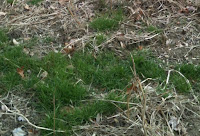Cristo Rey Farm
26 Apr Wed 2017
The Secret to Perfectly Peeled Hardboiled Eggs
The Secrets to Perfectly Peeled Hardboiled Eggs
It’s the perfect time of year for deviled eggs and egg salad sandwiches.
Hardboiled eggs are also a nutritious snack or a quality on-the-go breakfast.
Getting a good peeled egg is very satisfying and important for entertaining.
Growing up in Hollywood in a theatrical family didn’t exactly impart the most thorough education in homemaking skills. I actually had to learn how to boil eggs as an adult and only recently learned the secret to getting a boiled egg that will actually peel properly.
I was tired of experiencing THIS:
Ag!!! Don’t you just hate that?!!
We researched, tested and found the secret to peeling eggs!
Click here to get your free guide: "The Secret to Perfectly Peeled Hardboiled Eggs"
We hope you enjoy your perfectly peeled eggs!!!
KC and ED
Cristo Rey Farm
Farm News:
1st Chicken Harvest of the 2017 Season: Saturday, May 6th.
Click here to reserve your fresh chicken!
100 new egg layers arrive this week!
We expect to be rolling in eggs by this summer.
Click here to be the first to know when they are available!
10 Aug Wed 2016
Why We Leave the Necks on Harvested Chicken
Several customers have asked us why we keep the necks on our harvest pastured chicken.
The simple answer is we keep the necks on our birds so that customers can receive the added benefit of the neck bones when using the carcass to make nutritious and delicious broth or chicken stock.
The old wives tale about chicken soup is true. One of the very best things you can add to your family’s diet is homemade broth:
"Stock contains minerals in a form the body can absorb easily—not just calcium but also magnesium, phosphorus, silicon, sulfur and trace minerals. It contains the broken down material from cartilage and tendons--stuff like chondroitin sulphates and glucosamine, now sold as expensive supplements for arthritis and joint pain." Sally Fallon of Weston Price Foundation
It is so simple to make broth. An easy recipe is posted below.
All our CSA shares include at no extra cost the organs, feet and heads. The feet and heads make bone broth extra rich and the organs are extremely valuable added to ground meats and as liverwurst or fried with onions (how to use the organs will be another blog post!).
The broth can be used in soup, rice, gravy or any other recipe calling for stock.
I warm some up on the stove and serve it in cups like we would coffee or tea. The whole family asks for 2nds!
The value of Cristo Rey Farm chicken goes beyond the taste and texture, animal and environmental benefits. Find out more in our article “Taste and More Than Taste”.
KC and ED
Cristo Rey Farm
Easy Recipe for Bone Broth
1-2 chicken carcasses
1 onion- quartered
4 carrots halved
3 celery stalks- halved
2 cloves garlic
2 bay leaves
Fresh ground pepper ½ tsp
Sea salt 1 tsp
Fresh parsley or dried 1 tsp
Opt. chicken feet (2) and 1 chicken head
Add water enough to cover all ingredients
Place all ingredients in Crock Pot on low and cook for 12-24 hours.
Or
Put ingredients in large pot on stove and bring to boil, then lower temp to lowest stove setting. Cook 12-24 hours.
Remove from heat and cool.
Strain broth and pour into glass containers and store in the refrigerator.
To keep it really simple use whatever ingredients of the above that you have on hand. The most important ingredients are the chicken bones, water, salt and pepper.
For more information on how and why to make broth, check out The Healthy Home Economist.
Video: "Life on the farm 2015":
https://www.youtube.com/watch?v=j4g44N5noqA
Find out the latest on our Facebook page:
https://www.facebook.com/pages/Cristo-Rey-Farm/1459476564284359
Cristo Rey Farm on the web:
http://cristoreyfarm.wix.com/organic-garden
23 Jul Thu 2015
Cristo Rey Farm CSA info
About our Pork
 |
| Pastured piggys |
 |
| One of our “Piggerated” paddocks |
Pigs have a plow on their faces aka their snout and do an excellent job rooting and digging. They till, weed, clear brush and clean up crops. They also produce valuable manure for fields and gardens and turn it all into delicious pork, bacon, sausage, ham, pork chops and much more!
 |
| New grass in winter! |
We use solar charged electric fences to define our paddocks. We can quickly create new paddocks wherever we need the pigs to work and where we have the best forage. This method is ecologically and environmentally enhancing and is not only sustainable but regenerative as can be seen here!
"Taste and Much More Than Taste!"
"All my kids wanted to eat for dinner was your chicken!"
"I had two chickens in my fridge, one store bought and one from your farm. I had to make them both because we had guests. We could actually taste the difference! Yours was far superior!"These are the kinds of comments I hear about the chicken we produce on our farm, Cristo Rey Farm.
For myself, I would say that it tastes like the chicken I remember from my childhood, that it has an actual taste- chicken that tastes like...chicken. Nowadays buying a supermarket chicken is like buying a texture and whatever you put on it is what it tastes like. Our chicken tastes clean and fresh and well, chickeny and it is moist and succulent and down right (if I do say so myself) delicious.
(inhibits bleeding after throat is slit)
Moving one of our earlier model chicken tractors to fresh pasture:
Ed and KC Schnitker
Cristo Rey Farm
Leonardtown, MD




